This report provides findings from a qualitative analysis of evidence-based and culturally relevant behavioral health practices offered at NNEDLearn, a SAMHSA training, offered from 2011 to 2020. It includes an overview of NNEDLearn, case studies, strategies and lessons learned, and conclusion.
Dashboard: Filter Bricks
Main page content
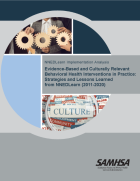

This guide reviews ways that telehealth modalities can be used to provide treatment for serious mental illness and substance use disorders among adults, distills the research into recommendations for practice, and provides examples of how these recommendations can be implemented.

This issue brief presents recent data on prevalence of opioid misuse & death rates in the Hispanic/Latino population; contextual factors & challenges to prevention & treatment; innovative outreach & engagement strategies to connect people to evidence-based treatment; and the importance of community voice.
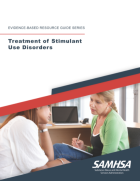
This guide supports health care providers, systems, and communities seeking to treat stimulant use disorders. It describes relevant research findings, examines best practices, identifies knowledge gaps and implementation challenges, and offers useful resources.

This quick guide contains an overview of the challenges associated with tobacco cessation and the benefits of being tobacco-free for individuals as well as those of a smoke-free workplace. It also includes tips that substance use disorder treatment settings can use to implement their own tobacco cessation programs.
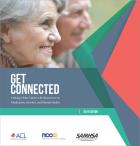
Designed for organizations that provide services to older adults, this toolkit offers information and materials to help understanding the issues associated with substance misuse and mental illness in older adults. The toolkit also contains materials to educate older adults.

This manual offers guidance on how to engage youth during government-sponsored events and meetings. It includes resources to support youth services, youth development, youth leadership, civic engagement, and youth organizing.

For individuals at risk of suicide, primary and behavioral health care settings provide unique opportunities to connect with the health care system and access effective treatment. Suicide Safe is a free mobile app that helps providers integrate suicide prevention strategies into their practice and address suicide risk among their patients. The Suicide Safe app is based on SAMHSA's Suicide Assessment Five-Step Evaluation and Triage (SAFE-T) card.
With Suicide Safe, primary and behavioral health care providers can:
- Learn how to use the SAFE-T approach when working with patients.
- Explore interactive sample case studies and see SAFE-T in action through case scenarios and tips.
- Quickly access and share information, including crisis lines, fact sheets, educational opportunities, and treatment resources.
- Browse conversation starters that provide sample language and tips for talking with patients who may need suicide intervention.
- Locate treatment options, filter by type and distance, and share locations and resources to provide timely referrals for patients.
For more information, email SAMHSA at samhsainfo@samhsa.hhs.gov.
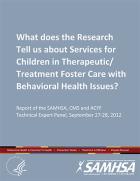
This report discusses a technical expert panel convened to assess research about therapeutic services for youth living in foster care. It reviews the scientific evidence and expert panel input to identify action items and further research needs.
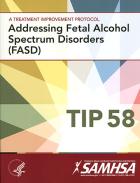
This guide reviews screening tools for alcohol use and interventions for pregnant women and women of childbearing age to prevent fetal alcohol spectrum disorders (FASD). It also outlines methods for identifying people living with FASD and modifying treatment accordingly. Access the literature review.
Displaying 1 - 10 out of 14

